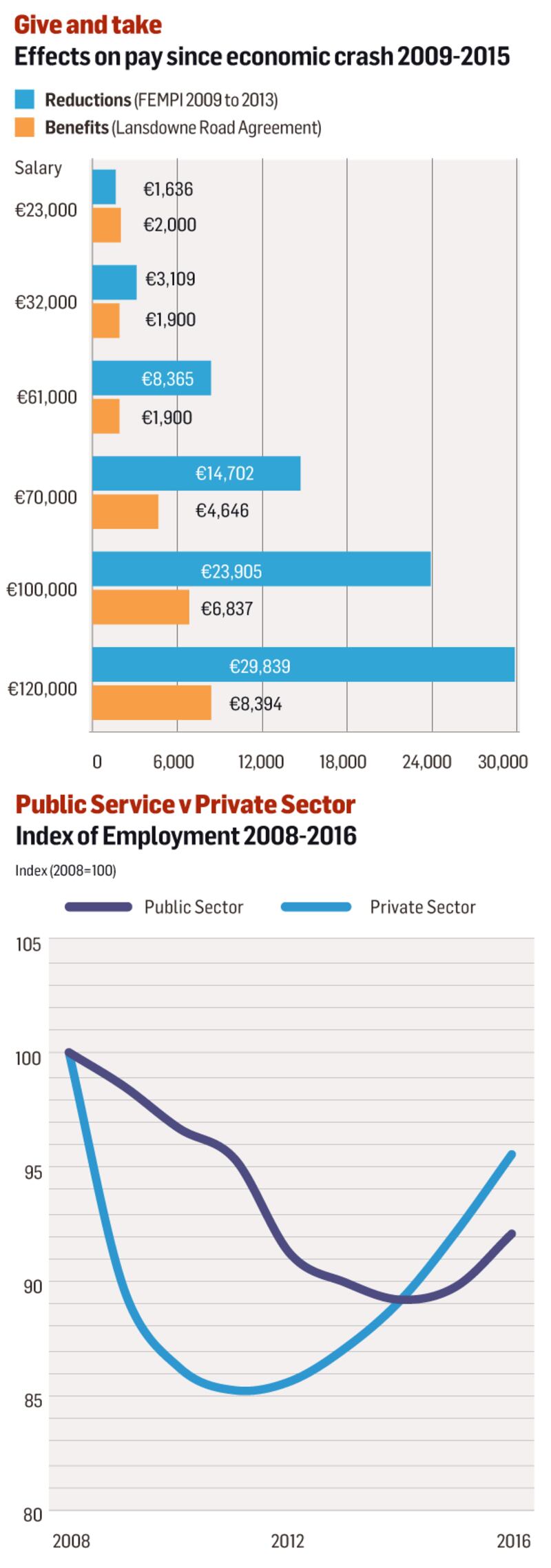The publication on Tuesday of the 150-page report of the Public Service Pay Commission effectively fires the starting gun on talks on a new pay deal for the country's 300,000 State employees.
Both unions and the Government will be pleased with elements of the document.
The unions will be happy at the commission’s recognition of the sacrifices made by staff as well as the warning that it will be hard to justify, as the economy improves, the continuation of financial emergency legislation that underpinned the various pay cuts imposed over recent years.

The Government will welcome the acknowledgement that ability to pay would be a crucial factor in any new deal in the context of other competing financial pressures.
However this does not mean that a deal is guaranteed when the talks commence in the weeks ahead.
The main items on the agenda – pay increases/restoration, pensions, additional working hours, the two-tier pay structures for recent entrants – have been known for months, and positions adopted at union conferences over recent weeks have revealed the scale of the gulf that exists in many cases between the Government and its employees.
The commission’s report has now, in addition, raised a number of uncomfortable issues which will have to be addressed if a deal is to be secured.
Pension levy
It has been known since before Christmas that the Government wanted staff to make a greater contribution to their pensions, particularly in circumstances where it would be scaling back or eliminating the existing public service pension levy.
The levy currently generates about €600 million per year, and it is understood the Government is keen to hold on to some of this money. However, the key question will be who will have to pay any new higher contribution?
In the public service the equation generally is that the more money that is intended to be realised, the lower the income threshold at which the measure will apply. The more people who will be caught in the net, the more likely any such measure will be strongly resisted.
Another major issue will be pay. The Lansdowne Road agreement was based on a system of flat-rate increases which gave most to the lowest paid. However, the commission has found that in general lower-paid grades in the public service are now paid more than their private sector equivalents, while the reverse is true for higher earners.
Thorny issue
A further thorny issue that the talks will have to address is the calls for more money by groups, such as nurses, to address labour market shortages and to aid recruitment and retention. A deal that gives significantly more to one group than another runs the risk of being rejected in subsequent ballots of trade unions.
The commission’s report may also present difficulties in its suggestion that pay rises should be linked to the continuation of work practice reforms and productivity.
A succession of public service groups over recent weeks have demanded a rolling back of productivity measures such as additional unpaid hours of work which they have been obliged to carry out in recent years.









